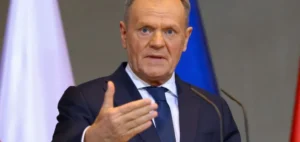On February 24, a crack of a size never before imagined was discovered in an emergency pipe at the Penly 1 reactor. It “extends over 155 mm, i.e. about a quarter of the circumference of the pipe, and its maximum depth is 23 mm, for a pipe thickness of 27 mm,” the Nuclear Safety Authority said. This crack is “significant” and appears to be related to non-compliant weld repairs at the time of the plant’s construction.
What is stress corrosion?
Stress corrosion is a common phenomenon in industry. It occurs when a material degrades and cracks in contact with a chemical environment, over a few millimeters. This phenomenon was detected in October 2021 in the EDF nuclear fleet, near welds on portions of stainless steel piping. This affects in particular the safety injection circuits (RIS), which are used to send borated water (containing boric acid) to cool the reactor in case of an accident. Since its detection, EDF has realized that the problem mainly affects the most recent and powerful reactors (1,300 and 1,450 MW), because of their longer pipe sections, with more welds, therefore more fragile.
Why is the Penly crack of a new kind?
EDF revealed in a note published online on 24 February a “significant defect” in one of these emergency pipes on the Penly 1 reactor, commissioned in the early 1990s. This time, the crack is not “micro” but “important”, of a size never before considered. In addition, it appears to be related to repairs of non-compliant welds at the time of plant construction. “There was an approach that is not acceptable, which consisted of forcing the pipes to align them to weld them, and there were defects on this weld that led to a second repair,” explained the president of the ASN, Bernard Doroszczuk, to the Senate. In addition, it is located on another area of piping that had not previously been considered by EDF as sensitive to stress corrosion.
How is EDF dealing with the problem?
EDF was forced to shut down several nuclear reactors for inspection and repair due to corrosion. Sixteen of the 56 French reactors have been identified as sensitive to this problem. Work is underway or planned for 2023 for ten of them. This industrial crisis has contributed to the fall in nuclear electricity production in 2022 to its lowest level in history, which has deepened the losses of the electric company. Although EDF considered itself to be “out of a crisis situation” in November, the new crack at Penly is causing new uncertainties.
The Nuclear Safety Authority has ordered EDF to “revise its strategy” to solve the problem, and the crack at Penly will lead to extended shutdowns at other sites for extensive checks.






















